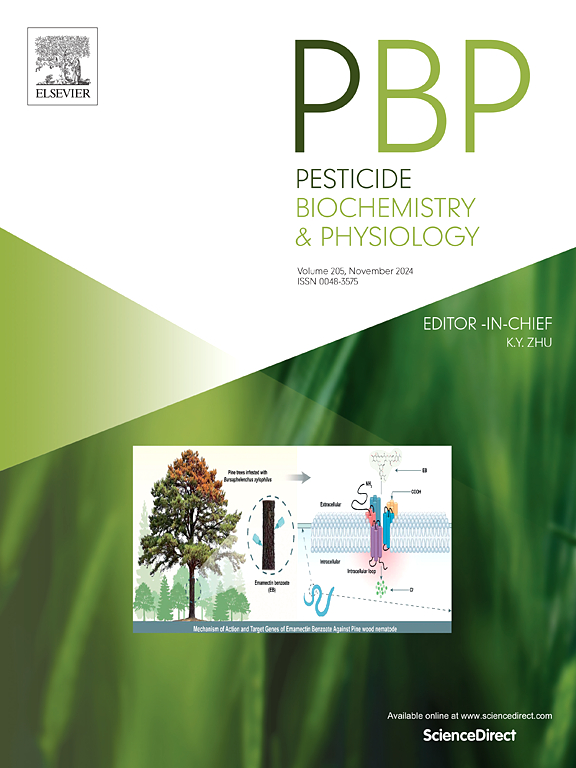A comparative study of the controllable release and insecticidal efficacy for two typical carrier methods on diamide insecticide delivery system
IF 4.2
1区 农林科学
Q2 BIOCHEMISTRY & MOLECULAR BIOLOGY
引用次数: 0
Abstract
Using nano/microcarriers of pesticides in sustainable pest management represents a promising strategy for enhancing pesticide efficiency while mitigating environmental harm. The reported pesticide loading methods include one-step self-assembly encapsulation and two-step absorption loading, but the controllable release and insecticidal efficacy of these two methods have been infrequently evaluated. Herein, the typical diamide insecticide cyantraniliprole (CTP) was employed as the model pesticide. A hydrogen bond-driven one-step self-assembly method and a chemical deposition method were utilized to fabricate highly dispersed polylactic acid (PLA) microspheres and calcium carbonate (CaCO3) microspheres. The resulting CTP-loaded PLA microspheres (CTP-PLA MS) and CaCO3 microspheres (CTP-CaCO3 MS) both exhibited high adhesion, resistance to rain erosion, and insecticidal activity under laboratory conditions. However, the functional CTP-PLA MS demonstrated superior sustained pesticide release performance, higher pesticide loading capacity, and less application amount than that of CTP-CaCO3 MS. At the same time, the acute toxicity of CTP-PLA MS exhibited slightly reduced acute toxicity to honeybees (Apis mellifera), signifying enhanced biocompatibility. Finally, the CTP-PLA MS maintained superior insecticidal efficacy than the normal CTP in controlling O. nubilalis at a low concentration. The present study represents a promising pesticide carrier as a highly efficient, eco-friendly agent for sustained management of O. nubilalis.

求助全文
约1分钟内获得全文
求助全文
来源期刊
CiteScore
7.00
自引率
8.50%
发文量
238
审稿时长
4.2 months
期刊介绍:
Pesticide Biochemistry and Physiology publishes original scientific articles pertaining to the mode of action of plant protection agents such as insecticides, fungicides, herbicides, and similar compounds, including nonlethal pest control agents, biosynthesis of pheromones, hormones, and plant resistance agents. Manuscripts may include a biochemical, physiological, or molecular study for an understanding of comparative toxicology or selective toxicity of both target and nontarget organisms. Particular interest will be given to studies on the molecular biology of pest control, toxicology, and pesticide resistance.
Research Areas Emphasized Include the Biochemistry and Physiology of:
• Comparative toxicity
• Mode of action
• Pathophysiology
• Plant growth regulators
• Resistance
• Other effects of pesticides on both parasites and hosts.

 求助内容:
求助内容: 应助结果提醒方式:
应助结果提醒方式:


